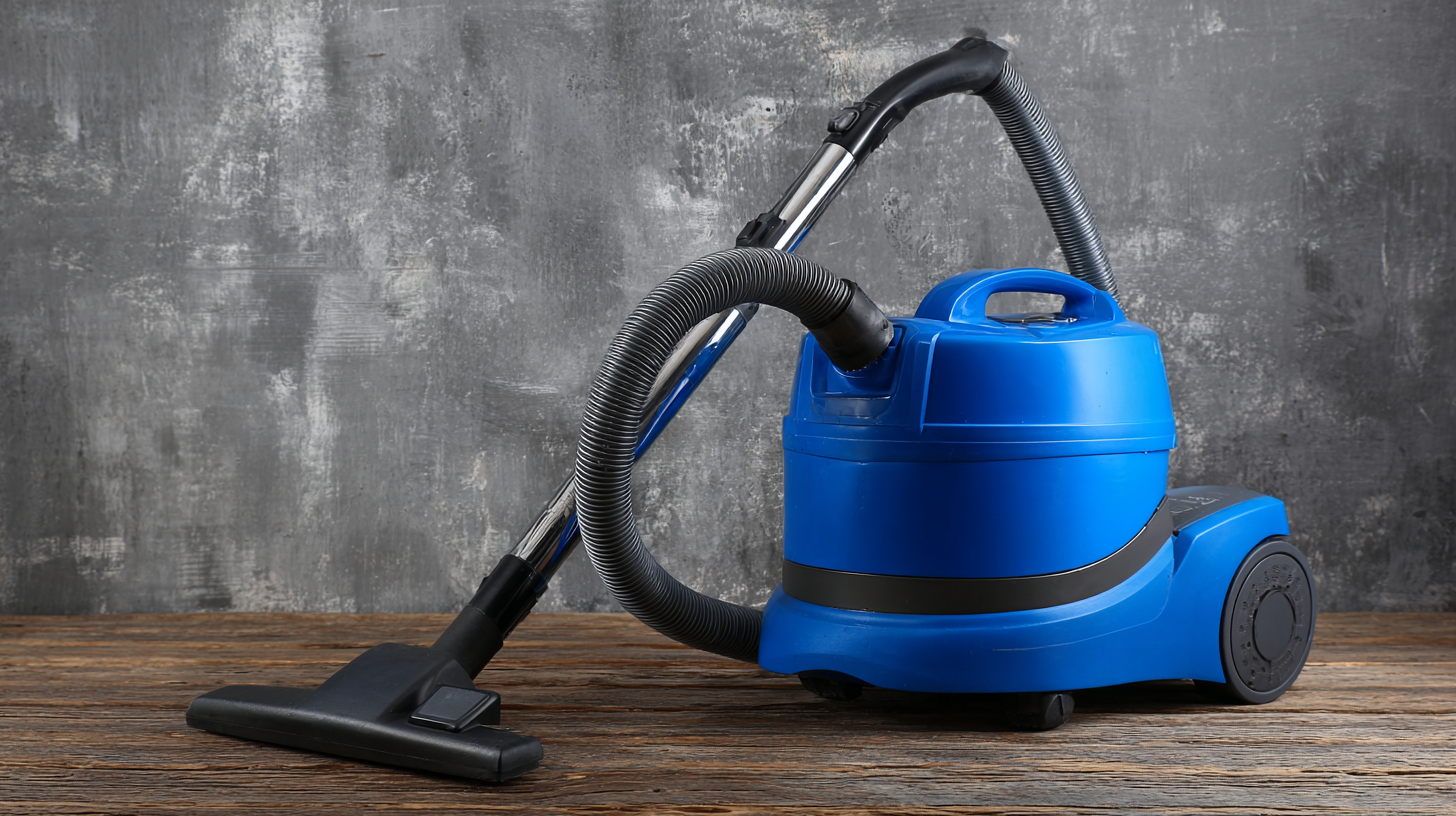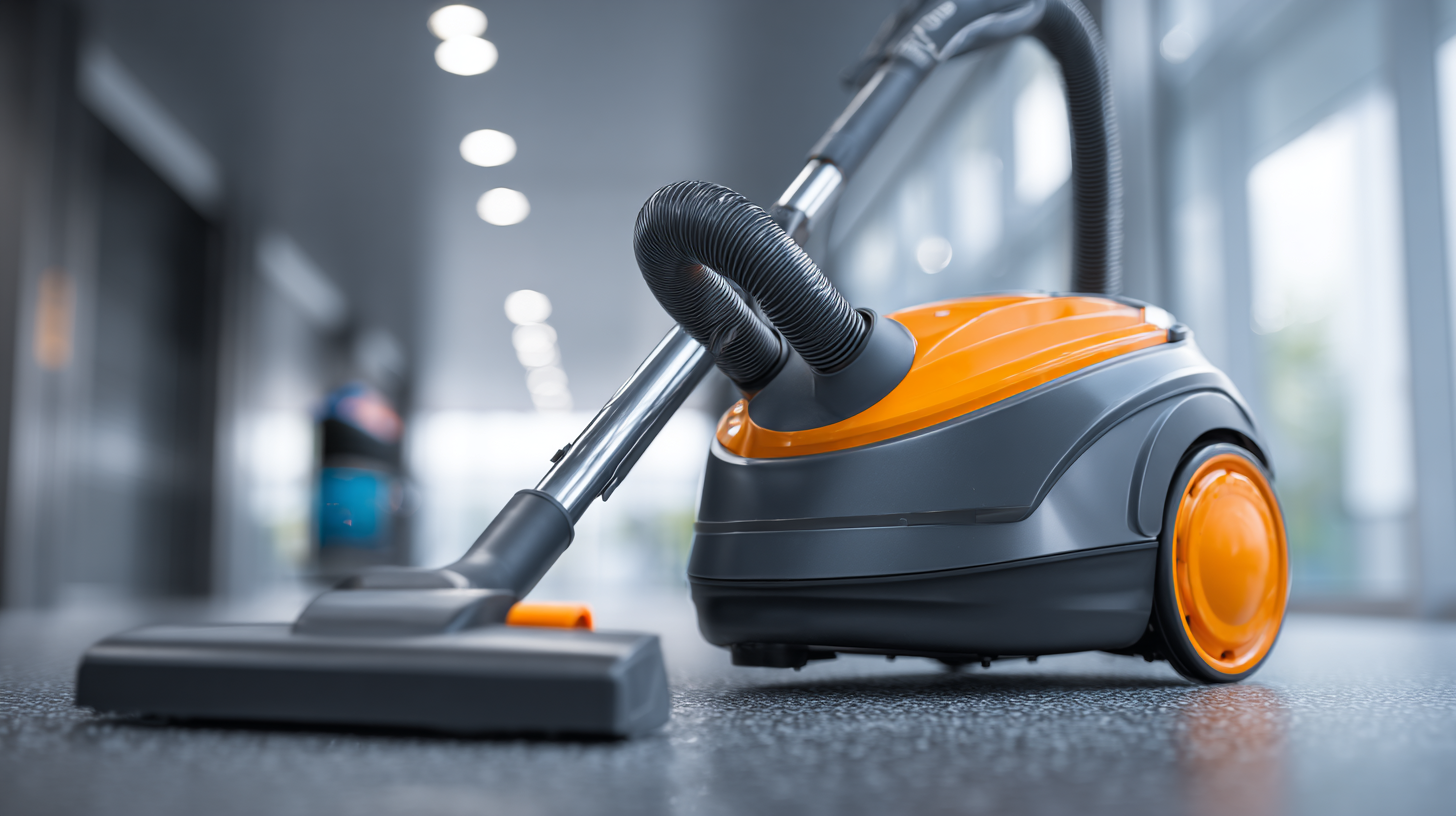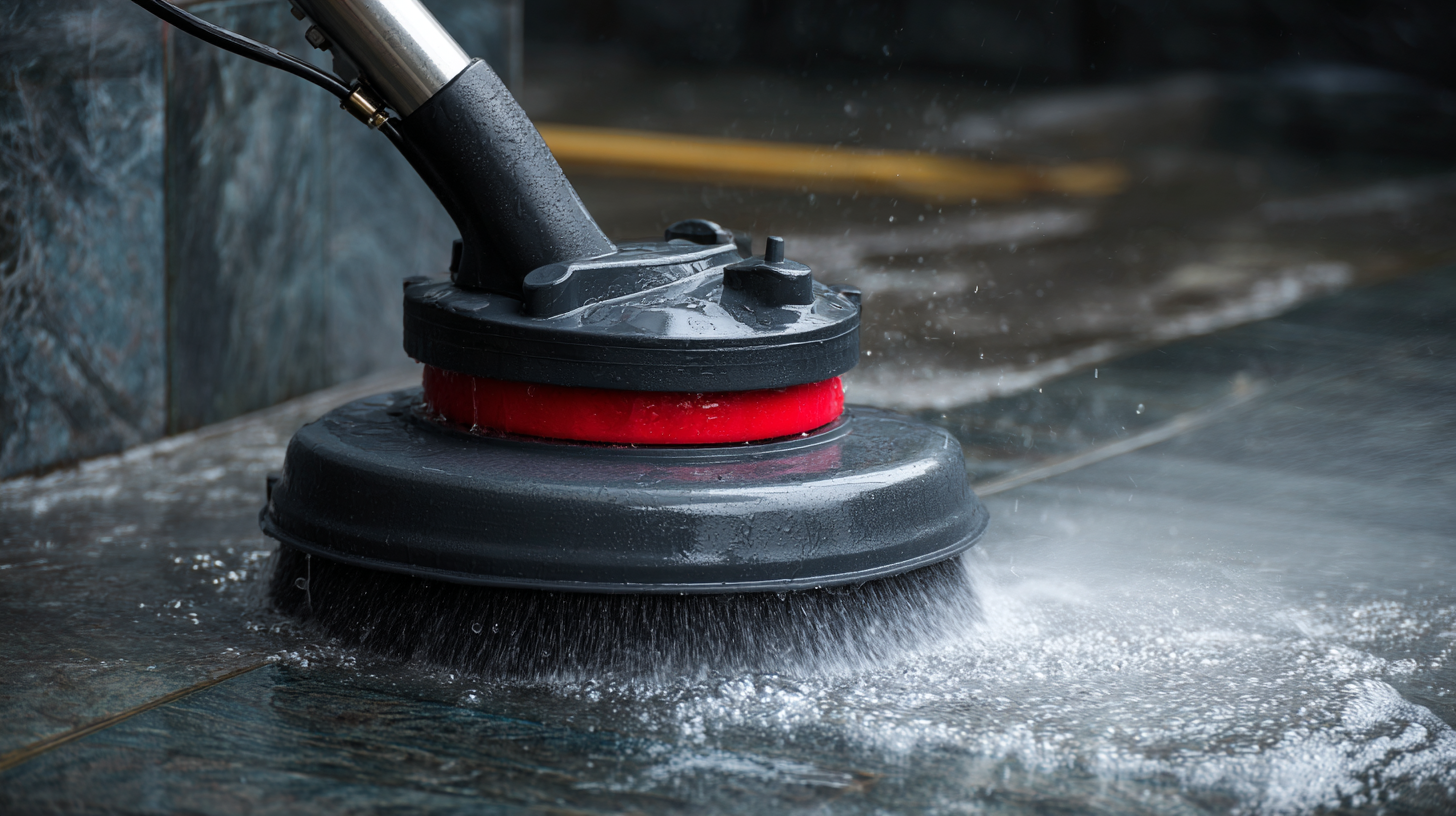Innovative Uses of Best Wet Dry Vacuum Cleaner in Various Industries
In today's fast-paced industrial landscape, the versatility and efficiency of a wet dry vacuum cleaner have become indispensable across various sectors. These powerful cleaning devices are designed to handle both liquid and solid debris, making them an ideal solution for industries ranging from construction and manufacturing to food service and healthcare. As companies strive to maintain cleanliness and safety in their facilities, the innovative applications of wet dry vacuum cleaners are not only improving operational efficiency but also enhancing workplace hygiene. This blog will explore the distinctive features of different types of wet dry vacuum cleaners, their benefits, and how they can be tailored to meet the specific needs of diverse industries. Join us as we delve into the remarkable ways these machines are transforming cleaning practices and driving progress in various fields.

Innovative Applications of Wet Dry Vacuums in Construction and Renovation Projects
Wet dry vacuums are transforming the way construction and renovation projects are executed. From managing dust and debris during demolition to efficiently cleaning up spills and water damage, these versatile tools are indispensable on job sites. Their powerful suction capabilities make them perfect for removing fine particles, ensuring a safer environment for workers and enhancing overall project quality.
Here are some tips for maximizing the effectiveness of wet dry vacuums in construction settings. First, always choose the appropriate filter for the type of material being collected; using a HEPA filter can trap smaller particles, while a standard filter suffices for larger debris. Additionally, regularly check and maintain the vacuum to prevent clogs and ensure optimal performance. Finally, consider using attachment accessories that enable better reach and more efficient cleanup in tight spaces, which helps maintain a tidy work area.
As industries continue to innovate, the applications of wet dry vacuums are expanding. New features such as smart sensors and enhanced mobility are being integrated to meet the diverse needs of construction professionals. Leveraging these advancements can lead to more streamlined workflows and increased productivity on the job site.

Enhancing Efficiency: How Wet Dry Vacuums Transform Cleaning in the Automotive Industry
In the automotive industry, maintaining a clean and organized workspace is crucial for efficiency and safety. The use of wet dry vacuum cleaners has revolutionized how auto shops manage debris, spills, and dust, ensuring that every corner of the facility is spotless. These versatile tools can handle everything from liquids to heavy contaminants, making them essential for both routine maintenance and unexpected messes. Technicians can quickly clean up oil spills or coolant leaks, preventing hazards and improving air quality.
Additionally, wet dry vacuums enhance productivity by reducing downtime. Instead of wasting valuable time on manual clean-ups, workers can swiftly switch between vacuuming tasks, allowing them to focus on repairs and services that generate revenue. The powerful suction and variety of attachments available mean that these vacuums can easily be adapted to different cleaning situations, whether it's clearing debris from the shop floor or restoring a client's vehicle after a thorough detailing. By integrating wet dry vacuums into daily operations, automotive businesses can ensure a safer, cleaner, and more efficient working environment.
Exploring the Benefits of Wet Dry Vacuums in Food Processing and Agriculture
Wet dry vacuums have become indispensable in various industries, particularly in food processing and agriculture. Their versatility allows for effective cleaning and maintenance in environments where spills and messes are common. In food processing facilities, these vacuums can quickly pick up both solids and liquids, ensuring that the workspace remains hygienic and compliant with health standards. Furthermore, they can be utilized for clearing debris during the harvesting process in agriculture, significantly improving efficiency and productivity.
**Tips for Using Wet Dry Vacuums in Food Processing:**
1. Always select a vacuum with a HEPA filter to ensure the removal of allergens and pathogens.
2. Regularly sanitize the vacuum after use to maintain hygienic conditions, preventing cross-contamination.
3. Utilize various attachments for specific tasks, such as crevice tools for tight spaces or extra-large tanks for handling large spills.
In agriculture, wet dry vacuums not only assist in maintaining a clean harvesting area but also help in managing water accumulation during rain. This proactive approach can reduce damage to crops and preserve the quality of produce. By keeping equipment and surroundings clean, farmers can also minimize the risk of pests and diseases that thrive in unclean environments.
**Tips for Agricultural Applications:**
1. Choose a model with sturdy wheels for easy maneuverability across uneven terrain.
2. Utilize the vacuum to remove excess water after irrigation to prevent root rot and disease.
3. Schedule regular maintenance checks to ensure optimal performance during the busy harvesting season.
Innovative Uses of Best Wet Dry Vacuum Cleaner in Various Industries
| Industry | Application | Benefits | Efficiency Improvement (%) |
|---|---|---|---|
| Food Processing | Cleaning production floors and equipment | Reduces contamination risk | 30% |
| Agriculture | Removing water from crop fields | Prevents crop damage | 25% |
| Construction | Debris and dust cleanup | Improves safety and visibility | 40% |
| Hospitality | Cleaning spills in restaurants | Enhances customer safety | 20% |
| Automotive | Cleaning car parts and floors | Increases workshop cleanliness | 35% |
The Role of Wet Dry Vacuums in Healthcare Facilities: Ensuring Hygiene and Safety
 In healthcare facilities, maintaining a high standard of hygiene is paramount. Wet dry vacuums play a crucial role in achieving this objective by efficiently removing various types of debris, including liquid spills and solid contaminants. According to a recent report by the Global Health and Safety Organization, poor cleanliness in medical environments can lead to a 30% increase in infection rates, emphasizing the need for effective cleaning equipment. Wet dry vacuums are designed to handle both wet and dry waste, making them invaluable in settings such as hospitals, clinics, and laboratories where rapid response to spills is essential.
In healthcare facilities, maintaining a high standard of hygiene is paramount. Wet dry vacuums play a crucial role in achieving this objective by efficiently removing various types of debris, including liquid spills and solid contaminants. According to a recent report by the Global Health and Safety Organization, poor cleanliness in medical environments can lead to a 30% increase in infection rates, emphasizing the need for effective cleaning equipment. Wet dry vacuums are designed to handle both wet and dry waste, making them invaluable in settings such as hospitals, clinics, and laboratories where rapid response to spills is essential.
Moreover, wet dry vacuums contribute to enhanced safety in healthcare facilities by minimizing slip hazards resulting from spills. The Occupational Safety and Health Administration (OSHA) states that slips, trips, and falls constitute a significant portion of reported workplace injuries. By utilizing wet dry vacuums, healthcare workers can quickly address liquid accidents, ensuring a safer environment for both staff and patients.
The versatility and power of these vacuums not only uphold cleanliness standards but also foster a proactive approach to safety, ultimately leading to better patient outcomes and reduced healthcare costs.
Advancements in Wet Dry Vacuum Technology: A Look at Future Trends for 2025 and Beyond
The advancements in wet dry vacuum technology as we approach 2025 are set to revolutionize various industries. With innovations such as retractable LiDAR systems, robotic arms, and enhanced suction capabilities, these cleaners are becoming more versatile and efficient, allowing for seamless integration into manufacturing, construction, and even household cleaning sectors. The introduction of smart features into wet dry vacuums not only increases their operational efficiency but also provides users with real-time data and monitoring capabilities, making them indispensable tools in environments where cleanliness and safety are paramount.
As the demand for intelligent cleaning solutions grows, trends emerging from events like CES 2025 highlight the shift towards hands-free operation and adaptability. The latest models showcase cutting-edge technologies that allow these vacuum cleaners to navigate complex environments and handle a variety of materials, whether wet or dry. Future trends indicate that wet dry vacuums will further evolve, incorporating advanced AI and machine learning for improved performance and ease of use, positioning them as key players in the ongoing push towards smarter, more efficient cleaning technologies across all sectors.

